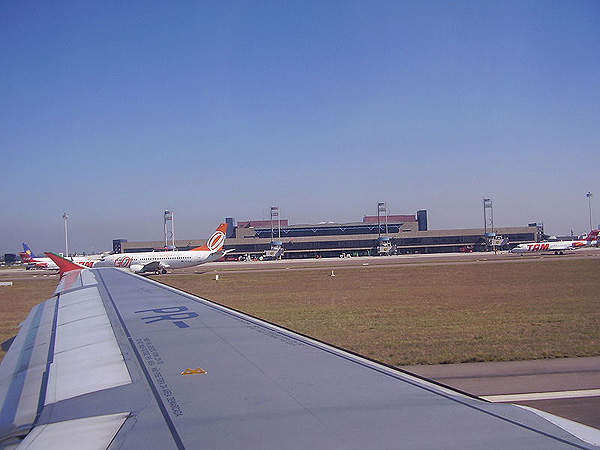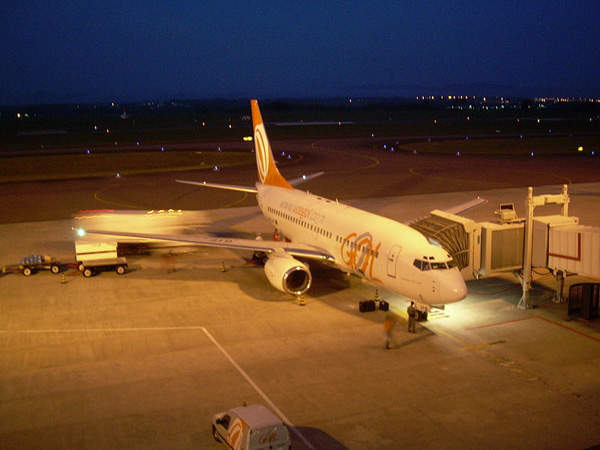Afonso Pena International Airport is one of the busiest airports in Brazil. It is located 18km from the centre of the city of São José dos Pinhais, in the municipality of Curitiba, Paraná.
It is named after Afonso Augusto Moreira Pena, the sixth President of Brazil. Infraero has been the operator of the airport since 1974.
The airport was originally an air field built during World War II to help serve the allied forces. Civil aviation began at the air field in 1946 and a passenger terminal was built to serve regional and international passengers.
The airport provides service to more than seven million passengers and records more than 94,000 aircraft operations annually. It handles 36,000 million tons of cargo every year.
Expansion of Afonso Pena International Airport
The airport facilities are being upgraded in the run up to the 2014 FIFA world Cup to be held in Brazil.
A $17.78 million cargo terminal expansion project was initiated in December 2010 as part of the upgrade. It is expected to be completed by March 2013.
Expansion of the runway and taxiway system began in September 2011. The project includes improving the takeoff, resurfacing the 15/33 runway and installing an ILS category III standard system. The works are expected to be completed by April 2013 at an estimated cost of $1.69m.
The airport terminal and road system expansion project is expected to start in April 2012. It is estimated to cost about $41.30m and is scheduled for completion in October 2013.
A new runway is also scheduled to be constructed. It will be the third runway at the airport. The construction is scheduled to begin in January 2013 for targeted completion by December 2013. It will cost approximately $14.28 million.
Terminal features of Brazil’s Afonso Pena International Airport
The first passenger terminal was built in 1946 when civil aviation began at the airport.
It was replaced by a new passenger terminal in 1959. The terminal was expanded in 1977 to increase the capacity fourfold. It was in use until 1996.
The airport was reconstructed in 1996 and a new passenger terminal was built as the airport was operating 40% beyond its capacity. The old passenger terminal was refurbished and converted into a cargo terminal. The cargo terminal measures 12,000m² in area.
The current terminal is spread over 26,000m², with six jetways and a passenger handling capacity of 4.5 million passengers a year. The facilities at the terminal include a small museum, a play-centre and a mall with 60 stores. It is also facilitated with banks, VIP lounges, restaurants and gift shops.
Maintenance facilities, runways and parking at the Paraná-based airport
The fixed base operations (FBOs) and ground handling services at the airport are provided by Fast Handling, H&S Servicos and Aeronauticos LTDA.
The airport has two runways which are paved with asphalt. The first runway (11/29) is 1,800m in length and the second runway (15/33) is 2,215m long.
The airport has parking slots for 688 cars. In addition, it has facilities to park up to 14 aircraft.
The airport has numerous ground transportation facilities available. Car rental service providers such as Movida, Avis, Finds, Locaralpha, Trifty and Nations have offices at the airport. Taxi services are provided by Cooperative Aerotaxi. Public transit buses and shuttles are also available at the airport.
Controversies involving the key Brazilian airport
In August 2000, a Boeing 737-2A1 fight was hijacked by five thieves when it was en route from Foz do Iguaçu to Curitiba-Afonso Pena. The thieves escaped with BRL 5m ($2.75m) by forcefully landing the fight at Porecatu. Nobody was injured in the incident.
In December 2002, an EMB 110 flight belonging to the Brazilian Air Force crashed during an emergency landing at the airport. All the 16 passengers and crew aboard the fight died in the accident.







